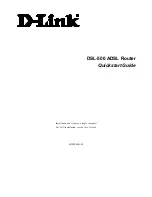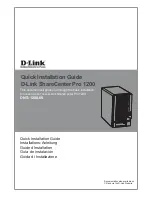
POEFEM24T2SFP User Manual
52
Alloy Computer Products Pty Ltd Copyright ©2006
Port-based:
Port-based VLAN’s are as it states defined by each port. Ports are configured
into logical groups allowing data to be sent to and from any port that belongs to a
particular group. If a port belongs to VLAN group 1 and another port belongs to
VLAN group 2 these ports will not be able to communicate with each other. Ports
that belong to the same group can communicate. Ports can also belong to
multiple groups for example, allowing an internet connection to be shared among
two VLAN groups. The switch has support for up to 26 port-based VLAN groups.
Symmetric VLAN:
This is an Ingress Rule (Rule 1, The Ingress Filtering Rule 1 is “forward only
packets with VID matching this port’s configured VID”.). For example, if port 1
receives a tagged packet with VID=100 (VLAN name=VLAN100), and if
Symmetric-Vlan function is enabled, the switch will check if port 1 is a member of
VLAN100. If yes, the received packet is forwarded; otherwise, the received
packet is dropped.
Note: If Symmetric is enabled and port 1, for example, receives an untagged
packet, the switch will apply the PVID of port 1 to tag this packet, the packet then
will be forwarded. But if the PVID of port 1 is not 100, the packet will be dropped.
Default:
Disabled
SVL:
When SVL is enabled, all VLAN’s will use the same filtering database storing the
membership information of the VLAN to learn or look up the membership
information of the VLAN. If SVL is disabled different VLAN groups will use
different filtering databases to store the membership information of the VLAN.
Default:
Disabled
Double-tag:
Double-tag mode belongs to tag-based VLAN’s; however it treats all packets as
untagged packets. This means that a tag with a pre-defined PVID will be added
to all packets. Therefore all packets that leave the switch will be tagged, if a
tagged packet is received by the switch an additional tag will be added thus
becoming a double-tag packet.
Double tag (Q in Q) provides additional flexibility for managing traffic flows, using
this method, service providers could use, for example, sending one flow of data
to a building and then separate and forward traffic based on supplemental IDs
used to identify specific tenants in a site. This can be useful for situations in
which traffic must be separated for management, tracking and billing purposes.
In addition this method enables customers to maintain their desired tag, without
concern that other organisations will share the same ID. Service providers avoid
potential problems by simply adding a second ID per customer in addition to the
shared tag.
Default:
Disabled
















































